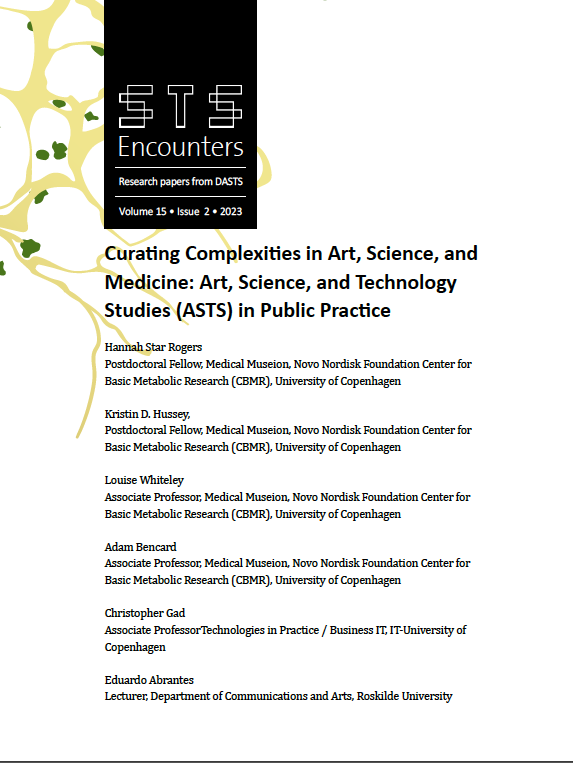Curating Complexities in Art, Science, and Medicine: Art, Science, and Technology Studies (ASTS) in Public Practice
DOI:
https://doi.org/10.7146/stse.v15i2.139814Keywords:
Art, Science and Technology Studies, social construction of knowledge, categories, bioart, biology and art, curation as knowledge-makingAbstract
What does art have to lend to Science and Technology Studies (STS)? Might we see art and its display in museums and galleries as a method of performing STS ‘by material means’? And what roles might STS scholars play in art-science collaborations? Drawing on our experiences with collaborations at the intersections of contemporary art and biology, we explore the similarities and overlapping practices of these knowledge communities and make a series of observations about the potential of the area of Art, Science, and Technology Studies (ASTS) to refigure and complicate the art-science landscape. Our analysis emphasizes the museum as a material public forum and curation as a form of knowing, histories of art and science, and examples of scholarly facilitation and intervention in art-science. We examine emerging patterns in ASTS scholarship and emerging roles for STS scholars as facilitators, participant-observers, curators, and collaborators, particularly in art-science institutions and newly emerging STS and art contexts in Denmark, and specifically, the Medical Museion. Our analysis reveals the persistent third leg of curation, cultural history, or STS as party to collaborations between artists and scientists.

Downloads
Published
How to Cite
Issue
Section
License
Copyright (c) 2023 Hannah Star Rogers, Kristin D. Hussey, Louise Whiteley, Adam Bencard, Christopher Gad, Eduardo Abrantes

This work is licensed under a Creative Commons Attribution-NonCommercial-ShareAlike 4.0 International License.
Starting with volume 15, articles published in STS Encounters are licensed under Attribution-NonCommercial-ShareAlike 4.0 International (CC BY-NC-SA 4.0). The editorial board may accept other Creative Commons licenses for individual articles, if required by funding bodies e.g. the European Research Council. Previous articles are not licensed under Creative Commons. In these volumes, all rights are reserved to the authors of the articles respectively.




